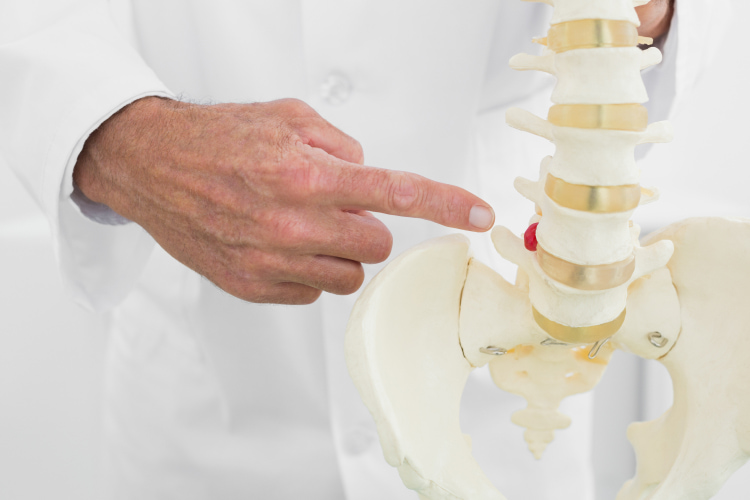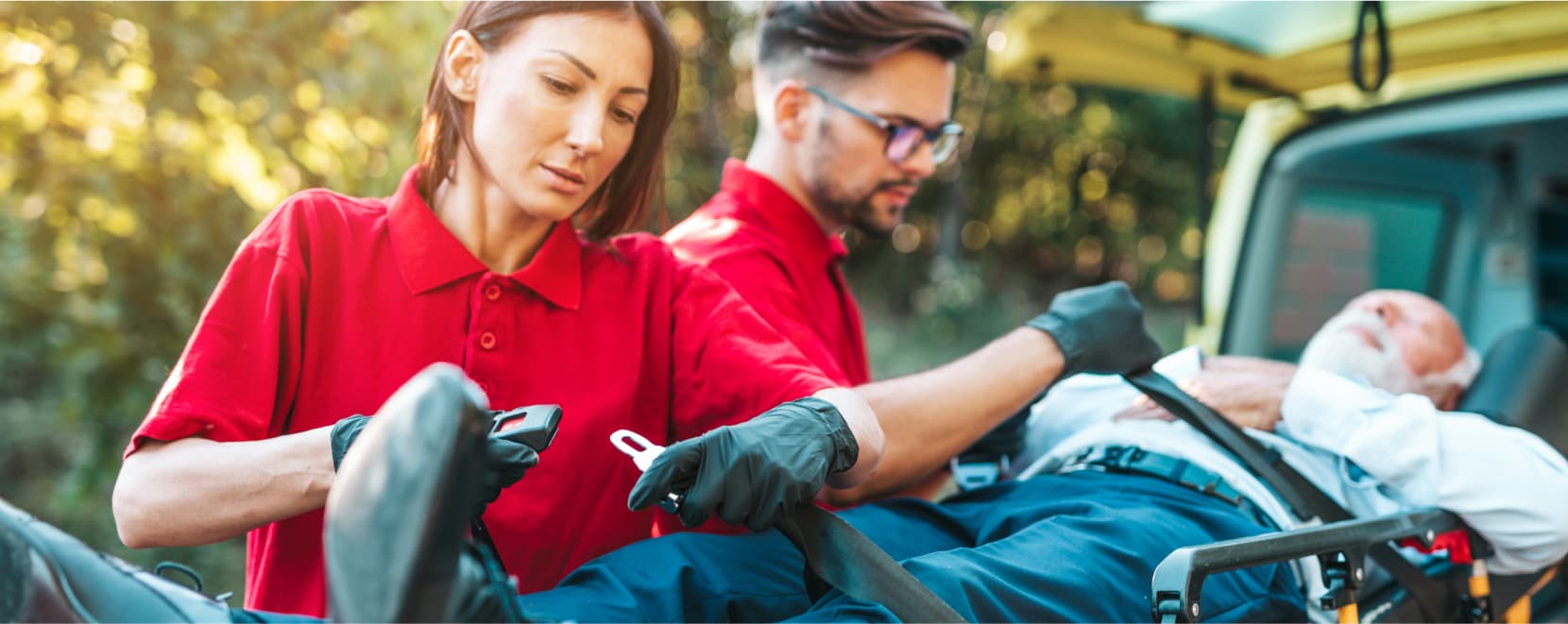Car accidents cause a massive range of traumas, one of which is a herniated disc. So you should get healthcare attention as soon as possible if you have such an issue. A herniated disc occurs when the soft inner material of a spinal disc pushes through a crack in the tougher outer layer. So it puts pressure on the spinal cord or nerves. This can provoke pain, numbness, tingling, and weakness in the affected area. It can also lead to complications if left untreated.
Fortunately, there are a variety of treatments available for herniated discs. They range from conservative options like physical therapy and chiropractic care to more invasive options like surgery. The right cure for you will depend on your injury’s severity and other factors. They include your age, overall health, and personal preferences.
In this article, we will explore the different treatment options available for disc herniation from a car accident. Here we will discuss how to choose the best course for your needs.
What is a Herniated Disc?
A herniated disc is a common condition that affects the spine. It occurs when one of the discs, the rubbery cushions between the vertebrae, pushes out of place and puts pressure on the nerves. This can provoke pain, numbness, and weakness in the affected area.
A car accident can cause a herniated disc in any part of the spine. But it is most common in the lower back (lumbar spine) and the neck (cervical spine). Many factors, including age-related degeneration, repetitive strain, and injury, can cause it.
It causes possible complications, which you can observe below.
| Complication | Description |
| Nerve damage | A disc herniation from a car accident compresses nerves in the spine, leading to nerve damage. This results in pain, numbness, tingling, or weakness in the affected areas. In severe cases, nerve damage causes loss of bowel or bladder control. |
| Loss of mobility | A herniated disc in the lower back cause difficulty in walking and standing. It leads to a loss of mobility. |
| Sciatica | The sciatic nerve becomes compressed in this condition. A herniated disc in the lower back can compress the sciatic nerve. It leads to pain, numbness, or weakness in the legs and feet. |
| Spinal stenosis | Herniated discs can contribute to spinal stenosis. It is a narrowing of the spinal canal. This leads to spinal cord compression, causing pain, numbness, or weakness in the arms and legs. |

Symptoms of a Herniated Disc
Most commonly, you can observe the pain, as well as numbness and tingling. A herniated disc is a typical condition after a car accident that can cause also other range of symptoms. Here are some common symptoms of a herniated disc that you should be aware of:
- Pain. The most common symptom of a herniated disc is pain. It ranges from mild to severe, depending on the location of the herniation. A person with herniated discs from a car accident can feel pain in their neck or lower back. It also radiates to the arms, legs, and buttocks.
- Numbness and tingling. Another common symptom of a herniated disc is numbness and tingling in the affected area. The nerve compression can cause the patient to feel pain or discomfort in the arms, legs, or other body parts. Sometimes disc herniation from a car accident can be along with a loss of sensation or weakness.
- Muscle weakness. A herniated disc can also lead to muscle weakness, particularly in the arms and legs. It makes it difficult to perform everyday tasks. For example, walking, lifting, or carrying objects.
- Difficulty with balance. In some cases, a herniated disc causes difficulty with balance and coordination. This makes it difficult to stand or walk and increases the fall risk.
- Bowel or bladder dysfunction. In rare cases, a herniated disc causes bowel or bladder dysfunction.
All these symptoms depend on the location of the herniation and the severity of the injury.
How is a Herniated Disc Diagnosed?
A timely diagnosis of disc herniation from a car accident is crucial. In such a way, you get an effective cure plan. The diagnosis process for a herniated disc typically involves:
- Combination of medical history
- Physical examination
- Diagnostic imaging
A doctor will inquire some information about the patient’s symptoms during a medical history:
- You should know when they began and what triggered them.
- The doctor will ask about the pain or discomfort’s type, location, and duration.
- They can also need the patient’s family history and prior treatments or surgeries.
A physical examination will help assess the range of motion, strength, and reflexes. A neurological examination can also be conducted. It checks the patient’s nerve function and detects any loss of sensation or weakness.
Diagnostic imaging, such as an X-ray, MRI, or CT scan, help confirm the diagnosis of bulging discs from a car accident. So the doctor can have a more detailed view of the injury:
- X-rays help rule out other conditions and identify bone-related issues.
- MRI and CT scans provide more detailed views of soft tissues. They include muscles, ligaments, and nerves.

Methods of Treatment Herniated Disc from Car Accident
The pain and discomfort caused by this injury can be debilitating and finding an effective treatment is essential for recovery. Here are some of the most common methods of treatment for herniated discs from car accidents:
- Physical therapy
- Chiropractic care
- Pain medication
- Epidural steroid injections
- Surgery
- Heat and cold therapy
Working with a medical professional to determine the most appropriate treatment for your injury is essential. In such a way you will fully recover and get back to your daily activities.
1. Physical therapy
It is a non-invasive treatment option for herniated discs caused by a car accident. It helps patients ease pain and improve mobility. A therapist will work with the patient to create an individualized exercise program.
The treatment plan will be customized based on the patient’s needs and restrictions. The exercises help strengthen the muscles surrounding the herniated disc. Also, they can:
- improve posture and flexibility
- reduce pressure on the affected area
Additionally, a physical therapist uses massage, heat, or cold therapy. The goal of physical therapy is to help patients regain function and mobility. This also prevents future injuries. In some cases, physical therapy can be the primary cure for a herniated disc.
2. Chiropractic care
This is also an effective treatment for bulging discs developed from a car accident. Chiropractors manipulate the spine as part of their training. They use various techniques to help reduce pain and discomfort. One common technique is spinal manipulation.
Here they use their hands or a device to apply controlled pressure to the affected area of the spine. This helps improve the spine’s alignment. Also, they ease pressure on the herniated disc. Chiropractors also use other therapies. They include:
- massage
- ultrasound
- heat therapy
Each of them decreases inflammation and improves blood flow to the affected area.
3. Pain medication
It can be used as a treatment for a herniated disc from a car accident to manage pain and discomfort. This helps with non-steroidal anti-inflammatory drugs (NSAIDs), such as:
- Aspirin
- Ibuprofen
- Naproxen
- Celecoxib
It reduces inflammation and relieves pain. Consult your doctor before taking any medication. A doctor can combine physical therapy with pain medication as the best treatment. Together they help manage pain and the healing process.
4. Epidural steroid injections
ESIs can be a helpful treatment option for patients with a herniated disc from a car accident. The injection delivers a steroid medication. They come into the space around the spinal cord and the nerves that cause the pain. This medication:
- reduces inflammation and pain in the affected area
- provides relief for the patient
ESIs can not provide a permanent solution and it requires periodic repetition. There are potential risks and side effects associated with ESIs. They involve infection, nerve damage, and allergic reactions. Patients considering this treatment option should discuss the risks and benefits with their healthcare provider.
5. Surgery
Surgery has usually considered a last resort treatment for a herniated disc. For example, when other non-surgical treatments have failed to provide relief. Surgical intervention can be required in severe cases when the herniated disc in the neck from a car accident causes significant pain or neurological symptoms that are not responding to other treatments. There are two most common types of surgeries used:
- Microdiscectomy removes only the part of the herniated disc that presses on the nerve root.
- Laminectomy involves removing part of the vertebrae to relieve pressure on the spinal cord or nerve roots.
6. Heat and cold therapies
These therapies can effectively relieve pain. They also reduce inflammation. Cold therapy involves applying ice or a cold pack to the affected area. It helps reduce inflammation and swelling, alleviating pain. Heat therapy helps increase blood flow and relax muscles. One can combine heat and cold therapy with other treatments. For example, it can be with:
- medication
- physical therapy
- chiropractic care
It can provide a comprehensive approach. It will manage bulging disc symptoms that appear from a car accident. However, it is essential to use heat and cold therapy correctly. In other cases, you can get further injury or complications. So it is best to consult with a healthcare specialist before any new cure regimen.
FAQ
How much does it usually cost to treat a herniated disc?
he cost starts from $100 and reaches up to $20000 for surgery of bulging discs from a car accident. The cost of treating a herniated disc varies depending on a variety of factors such as:
Severity of the injury
Type of treatment needed
Location
Healthcare provider
Is a herniated disc considered a serious injury?
Yes, a herniated disc is a serious injury. It can cause significant pain and discomfort. It can even lead to long-term disability if not properly treated. It can also impact a person’s ability to work and perform daily activities.
What are the 4 stages of disc herniation?
Disc herniation is typically categorized into four stages, ranging from mild to severe:
Stage 1 involves disc protrusion
Stage 2 involves a prolapse
Stage 3 involves extrusion
Stage 4 involves sequestration
What should you not do with a herniated disc?
You should not:
Ignore dangerous symptoms
Lift weights
Make sharp body amplitude movements
Gain weight
Be in constant stress
Supercool
And others restrictions
Why is walking good for disc hernia?
Walking is the safest and most useful way to support our spine. It helps start useful processes in it. It will speed up the spine healing process.
What food is good for herniated disc?
It is necessary to enrich your diet with calcium and vitamins, macro- and microelements:
Hard cheese
Dairy products
Sesame and poppy seeds
Red fish, pork meat, beef, chicken eggs
A lot of fresh herbs
Berries and vegetables





After my car accident, I was prescribed pain medication for my herniated disc, and it definitely helped manage the pain. Combined with physical therapy, it has been a vital part of my recovery process. And please, be sure to consult your doctor before you start taking any medication.
I recently suffered a herniated disc after a car accident, and it was incredibly painful. Physical therapy has been a lifesaver for me, helping me regain mobility and reduce discomfort. Highly recommend it!